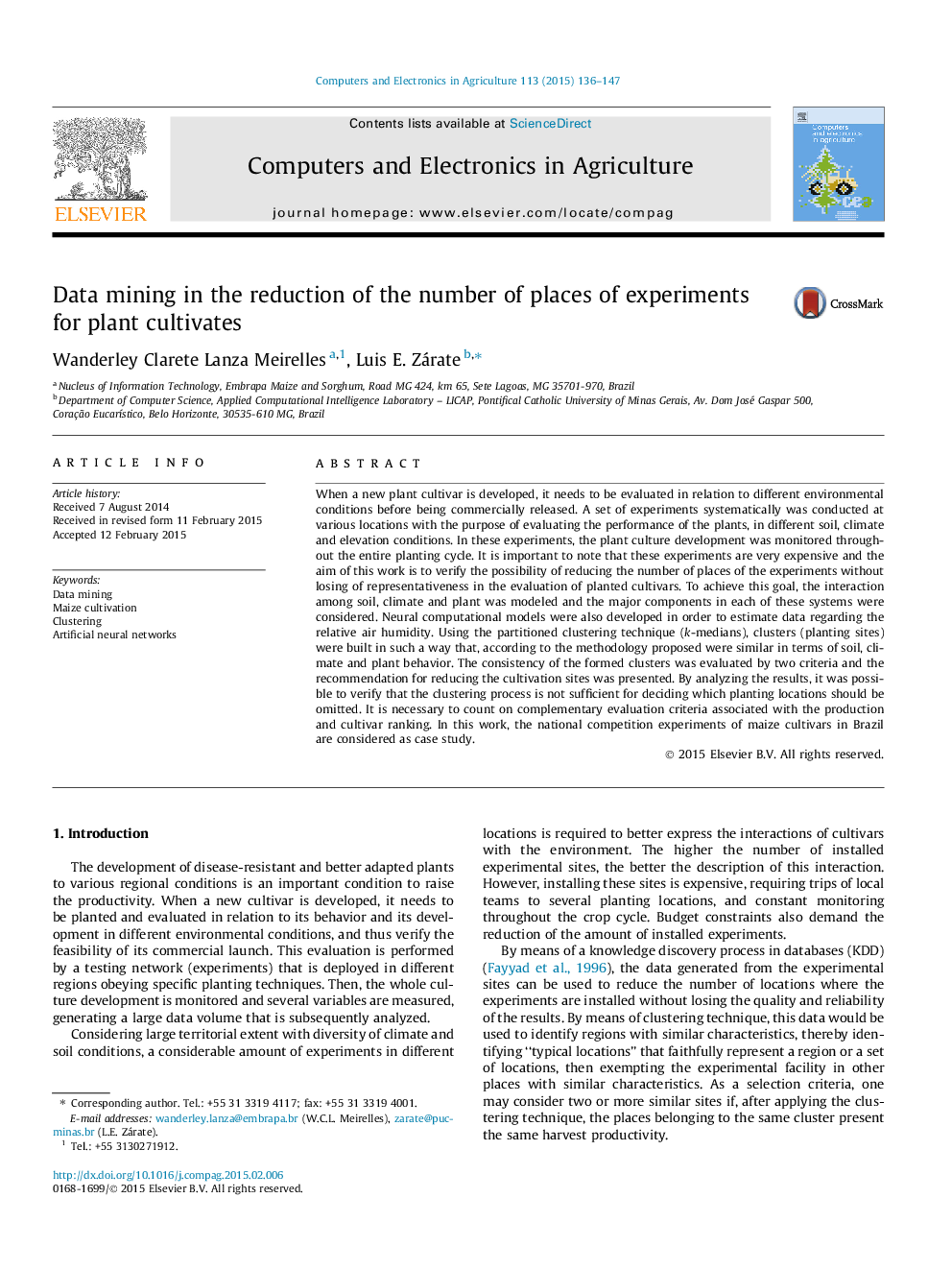| Article ID | Journal | Published Year | Pages | File Type |
|---|---|---|---|---|
| 6540813 | Computers and Electronics in Agriculture | 2015 | 12 Pages |
Abstract
When a new plant cultivar is developed, it needs to be evaluated in relation to different environmental conditions before being commercially released. A set of experiments systematically was conducted at various locations with the purpose of evaluating the performance of the plants, in different soil, climate and elevation conditions. In these experiments, the plant culture development was monitored throughout the entire planting cycle. It is important to note that these experiments are very expensive and the aim of this work is to verify the possibility of reducing the number of places of the experiments without losing of representativeness in the evaluation of planted cultivars. To achieve this goal, the interaction among soil, climate and plant was modeled and the major components in each of these systems were considered. Neural computational models were also developed in order to estimate data regarding the relative air humidity. Using the partitioned clustering technique (k-medians), clusters (planting sites) were built in such a way that, according to the methodology proposed were similar in terms of soil, climate and plant behavior. The consistency of the formed clusters was evaluated by two criteria and the recommendation for reducing the cultivation sites was presented. By analyzing the results, it was possible to verify that the clustering process is not sufficient for deciding which planting locations should be omitted. It is necessary to count on complementary evaluation criteria associated with the production and cultivar ranking. In this work, the national competition experiments of maize cultivars in Brazil are considered as case study.
Related Topics
Physical Sciences and Engineering
Computer Science
Computer Science Applications
Authors
Wanderley Clarete Lanza Meirelles, Luis E. Zárate,
